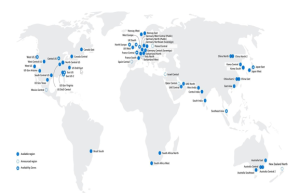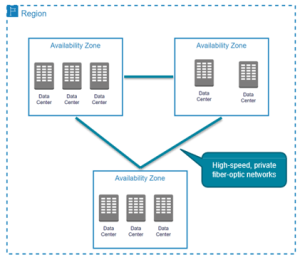Azure Global Infrastructure
Data Centers, Regions, Region pairs
⮚Region, which is a physical location around the world where we cluster data centers.
⮚Azure has more global regions than any other cloud provider.
⮚Better scalability and redundancy
⮚Preserve data residency
⮚Low Latency
⮚Global Footprint
⮚High Availability
⮚How to choose region?
⮚Compliance
⮚Proximity
⮚Available services
⮚Pricing

Azure region pairs
⮚Each Azure region is always paired with another region within the same geography
⮚Data centers are usually 300+ miles apart
⮚Automatic replication and failover for some azure services.
⮚Additional advantages of region pairs:
⮚If an extensive Azure outage occurs, one region out of every pair is prioritized to make sure at least one is restored as quickly as possible for applications hosted in that region pair.
⮚Planned Azure updates are rolled out to paired regions one
region at a time to minimize downtime and risk of application outage.
⮚Data continues to reside within the same geography as its pair.
Availability Zones

- The region represents a separate geographic area.
- An availability zone is a set of discrete data centers.
- The availability zone is set up to be an isolation boundary. If one zone goes down, the other continues working.
- Each availability zone has independent power, cooling, and networking.
- Availability zones are connected via high bandwidth, ultra-low latency networking
- AZS is physically separated by several kilometers while within 100 km (60 miles) of one each.
- All AZ traffic is encrypted.
- Not every region has support for availability zones.






